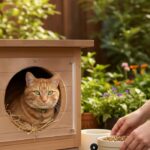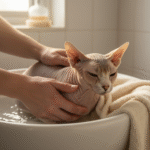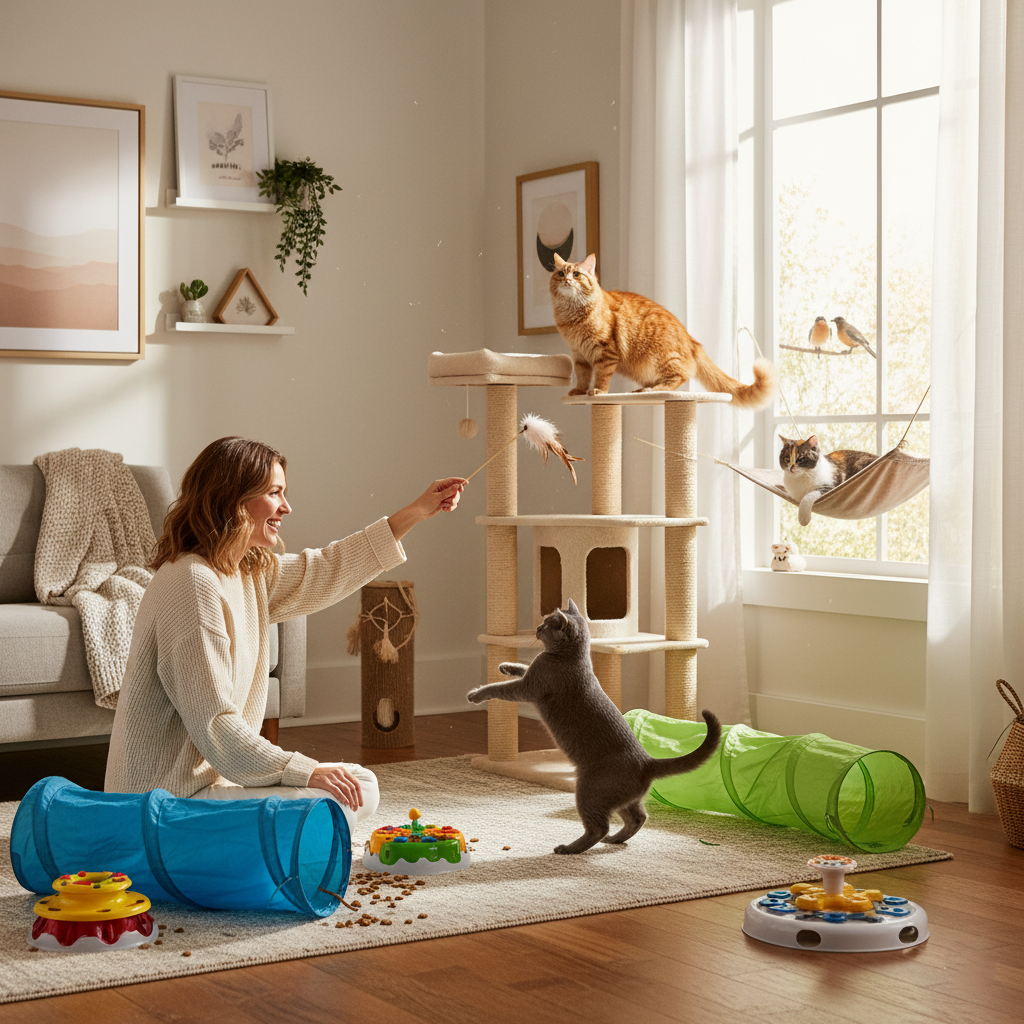Cats are curious, intelligent, and energetic creatures — even if they sometimes pretend to be professional nappers. While many people believe cats are low-maintenance pets, the truth is that keeping them physically active and mentally stimulated is essential to their overall health and happiness.
If your feline friend spends most of their time indoors, you’ve probably wondered how to keep indoor cats active and prevent boredom or weight gain. The good news? It’s easier than you might think. With a few creative ideas and a little daily attention, you can turn your home into a playground your cat will love.
Let’s explore practical and fun ways to make sure your indoor cat stays fit, engaged, and content — every single day.
Why It’s Important to Keep Indoor Cats Active
Indoor cats live longer, safer lives because they’re protected from traffic, predators, and outdoor diseases. However, living inside can also limit their opportunities for exercise and exploration. Without regular activity, cats can become bored, anxious, or even overweight.
An inactive cat is more likely to develop health problems like:
- Obesity and related issues such as diabetes or arthritis
- Behavioral problems, like scratching furniture or overgrooming
- Depression or anxiety caused by boredom and lack of stimulation
Keeping your indoor cat active isn’t just about burning calories — it’s about nurturing their natural instincts to hunt, chase, climb, and play. It’s about letting them be who they truly are: curious little predators with hearts full of personality.
1. Create an Enriching Environment
The key to keeping indoor cats active starts with their environment. A stimulating space encourages exploration and physical movement.
Set Up Cat Trees and Climbing Shelves
Cats love to climb and perch in high places. Providing vertical spaces like cat trees, climbing shelves, or window hammocks allows them to survey their “territory” and stay active while doing so.
If space is tight, wall-mounted shelves or even sturdy bookcases can do the trick. Just make sure they’re safe and secure.
Design a Window Watching Station
Place a perch near a sunny window where your cat can watch birds, squirrels, or passing cars. The outside world provides endless entertainment — it’s like TV for cats! You can even hang a bird feeder outside the window to give your kitty some “live-action” viewing.

2. Make Playtime a Daily Routine
Play is one of the most effective and enjoyable ways to keep indoor cats active. Regular play sessions help release pent-up energy, strengthen your bond, and keep your cat’s mind sharp.
Use Interactive Toys
Cats are natural hunters, so mimic their hunting instincts with toys that move unpredictably — like feather wands, laser pointers, or motorized mice.
Rotate toys every few days to keep things interesting. When a toy “disappears” for a while and then reappears, it feels new again!
Schedule Play Sessions
Try to engage your cat in active play for at least 10–15 minutes, twice a day. Early morning and evening are perfect times since cats are naturally most active during dawn and dusk.
DIY Toys for Extra Fun
You don’t need expensive gadgets. A crumpled piece of paper, a cardboard box, or a paper bag can turn into hours of entertainment. Cats love simple surprises.

3. Encourage Hunting Behavior
Cats are hunters by nature. Even if your indoor cat has never caught a mouse, that instinct still runs deep.
Try Puzzle Feeders
Puzzle feeders or treat-dispensing toys make your cat work for their food — mentally and physically. It challenges them to think, chase, and “hunt” their meal.
Hide Treats Around the House
Place small treats in different spots for your cat to discover. This turns feeding time into a scavenger hunt that keeps them moving and curious.
Interactive Feeding Games
You can also toss small pieces of kibble down a hallway and let your cat chase them one by one. It’s great exercise disguised as a game!
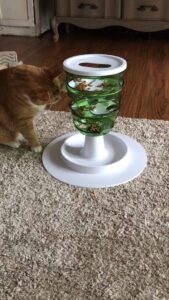
4. Provide Safe Outdoor Experiences
Some indoor cats crave the sights, sounds, and smells of the outdoors. While it’s important to keep them safe, there are ways to let them enjoy nature responsibly.
Leash Training
Yes, cats can be leash-trained! With a secure harness and a little patience, your cat can explore the backyard or garden under your supervision. Start slowly indoors before venturing outside.
Build a Cat Patio (Catio)
A “catio” — an enclosed outdoor space — lets your cat experience fresh air safely. It could be as simple as a window box enclosure or as elaborate as a full outdoor cat playground.
Supervised Outdoor Time
If you have a secure backyard, allow short supervised play sessions. Just be sure your cat is microchipped and wears a collar with an ID tag.

5. Introduce New Experiences and Challenges
Cats thrive on curiosity. Adding novelty to their routine keeps their minds sharp and spirits high.
Change Their Toys Regularly
Just like humans, cats can get bored with the same toys. Rotate them every week or introduce a new one occasionally to spark their interest.
Create Obstacle Courses
Use boxes, tunnels, and cushions to make a mini obstacle course. Encourage your cat to jump, climb, and explore. It’s a great indoor adventure!
Teach Simple Tricks
Believe it or not, cats can be trained. With treats and positive reinforcement, you can teach them to sit, high-five, or even jump through hoops. Training sessions provide mental stimulation and strengthen your bond.

6. Social Interaction and Companionship
Cats may seem independent, but they also crave affection and attention from their humans. A lonely cat can become withdrawn or inactive.
Spend Quality Time Together
Talk to your cat, pet them, or simply sit nearby while they play. Your presence can make them feel secure and loved.
Adopt a Companion
If your cat is social and you have the space and resources, consider adopting another cat. Having a playmate can significantly boost activity levels — just be sure to introduce them slowly and carefully.

7. Manage Diet and Weight Wisely
Physical activity goes hand in hand with a healthy diet. Even with plenty of play, too many calories can lead to weight gain.
Portion Control
Avoid free-feeding (leaving food out all day). Instead, measure meals and feed on a schedule to help maintain a healthy weight.
Choose High-Quality Food
Select food that provides balanced nutrition. Your vet can help recommend the best diet for your cat’s age, breed, and activity level.
Hydration Matters
Encourage water intake with a cat water fountain — many cats prefer moving water. Proper hydration supports overall health and energy.

8. Monitor Their Mood and Behavior
Every cat has a unique personality. Paying attention to your cat’s habits will help you spot changes early.
If your cat suddenly becomes less active, eats less, or seems uninterested in play, it could indicate stress or a health problem. Schedule a vet visit to rule out any issues.
Staying observant is key — your cat can’t tell you what’s wrong, but their behavior speaks volumes.

9. Create a Comfortable and Positive Environment
Happiness is just as important as activity. Cats need places where they feel safe, calm, and content.
Provide cozy spots for resting, scratching posts for marking territory, and plenty of positive reinforcement. A happy cat is a confident cat — and confident cats are naturally more active and playful.
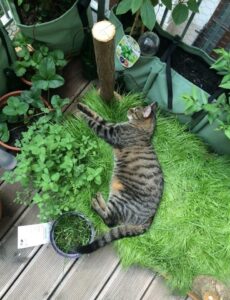
Frequently Asked Questions (FAQs)
1. How much exercise does an indoor cat need?
To keep indoor cats active, aim for at least two 10–15 minute play sessions daily. Regular exercise helps manage weight and supports their physical and emotional well-being. Some younger or more energetic breeds might need extra playtime to stay fit and happy.
2. What are the best toys to keep indoor cats active?
The best toys to keep indoor cats active are those that mimic natural hunting behavior — such as feather wands, laser pointers, or motorized mice. Interactive tunnels and puzzle feeders are also excellent choices because they challenge your cat’s mind while encouraging movement. Regularly changing these toys can help keep indoor cats active and prevent boredom.
3. Can I take my indoor cat outside safely?
Yes! To keep indoor cats active and stimulated, leash training is a great option. With a secure harness, you can safely introduce your cat to the outdoors. You can also build a “catio” (an enclosed outdoor space) to give them fresh air and sunlight. Always supervise outdoor time to keep indoor cats active in a safe and controlled environment.
4. What should I do if my cat doesn’t like to play?
If your cat isn’t interested in toys, you can still keep indoor cats active by finding what motivates them — it might be treats, movement, or your interaction. Try experimenting with different play styles, from chasing feather toys to climbing cat trees. Patience and variety are key ways to keep indoor cats active even when they seem uninterested at first.
5. How can I tell if my cat is bored?
A bored cat may overeat, sleep excessively, or scratch furniture. To prevent this, find ways to keep indoor cats active through mental and physical stimulation. Activities like treat hunts, puzzle games, or climbing shelves are great ways to keep indoor cats active and mentally alert throughout the day.
6. Do older indoor cats still need exercise?
Absolutely! Gentle activities are a wonderful way to keep indoor cats active as they age. Senior cats may not run and jump like kittens, but light play, short walks, or interactive feeders can help maintain mobility. Even small efforts to keep indoor cats active contribute to stronger joints, better circulation, and a happier mood.
7. How can I create a routine to keep indoor cats active every day?
The easiest way to keep indoor cats active consistently is by setting a daily play schedule. Combine morning and evening play sessions with puzzle feeders and short interactive breaks during the day. A consistent routine helps keep indoor cats active while strengthening your bond and preventing behavioral issues.
8. Can diet affect how well I can keep indoor cats active?
Yes — a proper diet plays a big role in your ability to keep indoor cats active. Overfeeding can lead to weight gain, reducing your cat’s interest in play. Feeding balanced meals with the right nutrients helps keep indoor cats active, energized, and ready to explore their environment.
9. What are some simple ways to keep indoor cats active when I’m not home?
You can keep indoor cats active even when you’re away by leaving out puzzle feeders, motion toys, or climbing structures. Setting up a window perch or cat tree also encourages movement throughout the day. These small changes ensure you keep indoor cats active even during your absence.
Keeping indoor cats active and happy doesn’t require fancy gadgets or complicated routines. It’s about understanding their instincts and giving them opportunities to explore, play, and connect — safely within your home.
When you take the time to keep indoor cats active, you’re not just improving their physical health. You’re nurturing their mind, reducing stress, and deepening the bond between you and your feline companion.
Remember, a tired cat is a happy cat — and a happy cat makes for a happier home.





